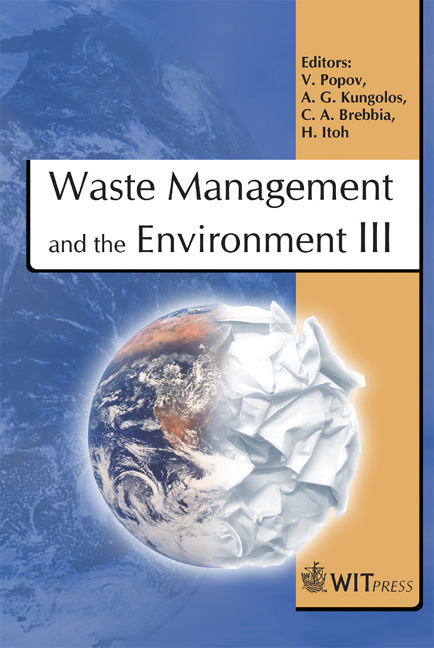Biological Transformation Of PCBs In Hazardous Site Waste Sludge
Price
Free (open access)
Transaction
Volume
92
Pages
9
Published
2006
Size
374 kb
Paper DOI
10.2495/WM060451
Copyright
WIT Press
Author(s)
J. Tharakan
Abstract
In this paper we review the use of biological technologies for the treatment of PCB contaminated hazardous wastes and report on some results that have been obtained from our laboratory on the utilization of two specific biological technologies for PCB biotransformation, including a microbial amended anaerobic-aerobic cycling bioreactor and an earthworm-inoculated vermicompost bioreactor. Our review of PCB biological transformation research suggests a large potential for biological transformation of PCBs using anaerobic reductive dechlorination, with several mediating organisms and effective pathways identified. The bulk of the research demonstrates reductive dechlorination of higher chlorinated PCB congeners accompanied by the appearance of increased levels of lower chlorinated congeners. Aerobic biodegradation using cosubstrates demonstrated degradation of lower chlorinated PCBs, mostly as a cometabolic function of cosubstrate oxidation. In our laboratories, actual hazardous waste sludge contaminated with PCBs demonstrated reductions of as much as 75% in an anaerobic-aerobic bioreactor amended with PCB-dechlorinating anaerobic sediments. The addition of PCB cometabolizing aerobic microbes did not reveal significant additional PCB reductions. Our research with earthworms demonstrated PCB removals, mainly through bioaccumulation in earthworm biomass, with little evidence of further PCB biotransformation. However, these results do suggest high potential for microbial or vermicompost systems and further research is warranted to establish mechanisms and elucidate procedures for biological transformation of PCBs in hazardous sludges. Keywords: polychlorinated biphenyls (PCBs), biotransformation, microbial, hazardous waste, earthworms.
Keywords
polychlorinated biphenyls (PCBs), biotransformation, microbial, hazardous waste, earthworms.





